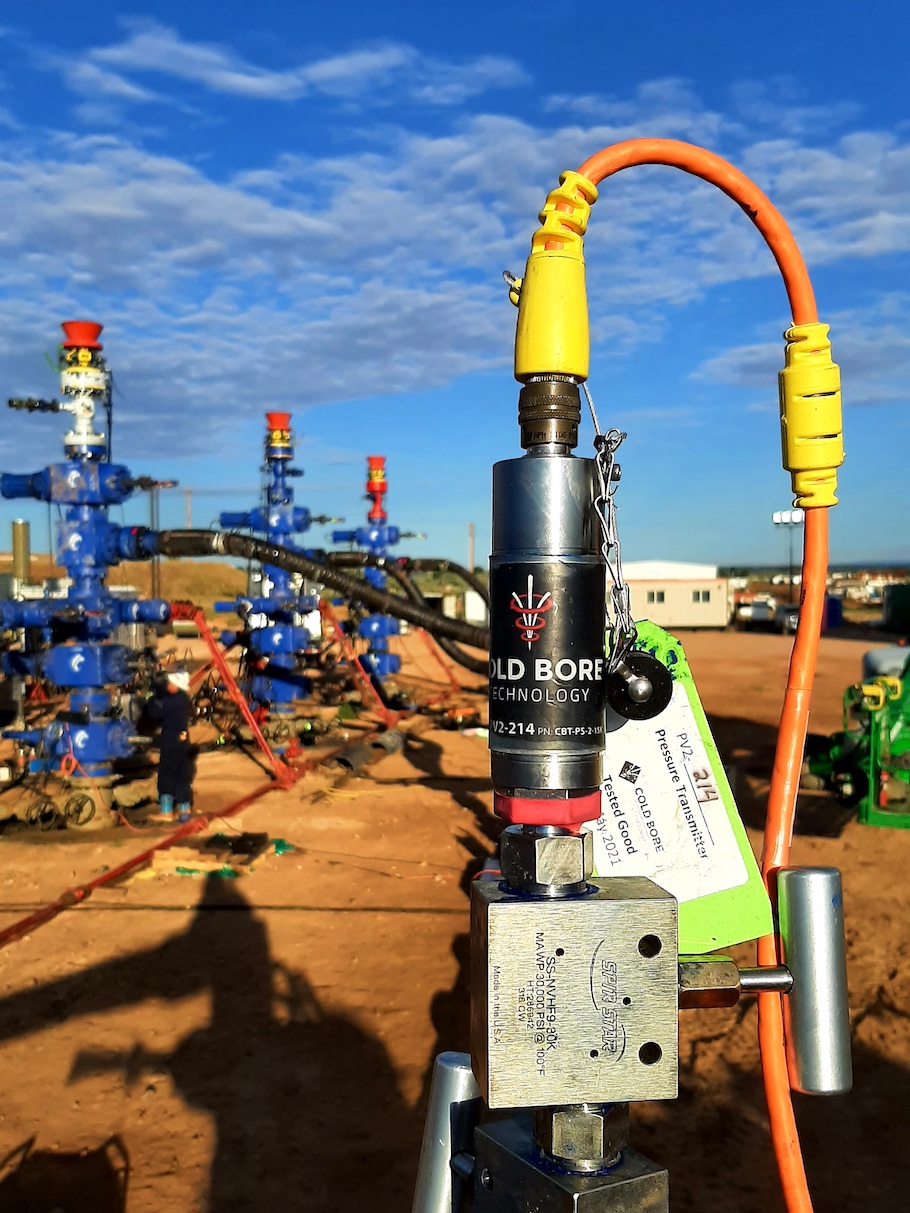Presented by:

Editor's note: This article appears in the new E&P newsletter. Subscribe to the E&P newsletter here.
The application of digital tools to reduce emissions and green business operations is, in 2021, nothing new. Many industries—from automotive to textiles, banking to pharmaceuticals—have long applied digital technologies to improve their environment performance, while also enjoying the attendant benefits of greater efficiency and profitability.
It’s a practice not only rewarded by the marketplace but expected in the same way safety standards and corporate governance policies are a given. Those companies that fail to try, let alone succeed, will be passed by.
Admittedly late to the party, the stage is now set for hydraulic fracturing’s cleanup. And its dance partner is, like those industries greened before it, digitization.

With the digitization of well completions, sensors at the wellhead provide automated data that is captured in real time by IIOT sensor-driven software. These data, from upward of six to 10 different service companies, are formatted and time-stamped, providing an accurate, verifiable operational time series. The fully autonomous system is visible and accessible.
Efficiencies gained from this automation allow faster completions, meaning less time on the pad and a collateral reduction in greenhouse-gas emissions from those completions. For example, with a completions master control system, Hibernia was able to shave 15 days off of a four-pad program. That is a 15-day reduction in the amount of time that diesel or natural gas burning assets (i.e., fracturing pumps) are working on site. That is a quantifiable reduction in emissions.
An autonomous hydraulic fracturing system also allows the operator and service companies to track and audit, with accurate contextual relevance, all the commodities used on location. In particular, water and chemical usage, and any reduction in their usage, can be measured and audited by all parties.
Digitized frac means real-time data can be used to make real-time decisions. For example:
- An adjustment to the gear and rate the fracturing pumps run at;
- Whether or not to idle the pumps when there’s no fracturing happening;
- The number of trucks to use to haul water; and
- How to design well completions differently to reduce emissions.
Whereas before the analysis and decisions were made after the fact using estimates, they can now be made precisely, while completions are occurring, to optimize production and materially reduce emissions.
Taking a page from another industry's playbook
There are plenty of examples of businesses that have already used digitization to improve their operations and reduce emissions.
Apparel giant NIKE announced its Move to Zero initiative in 2019 to both minimize the company’s environmental footprint and maximize avenues for positive impact as a brand. Specifically, the initiative included a commitment to reduce carbon emissions across the global supply chain by 30% by 2030.
Prioritizing environmental responsibility is not a new thing for NIKE. For more than a decade, the sporting wear giant has focused on developing digital technologies to drive its emissions reduction efforts. As a result, it has become a leader in its field.

With approximately 70% of its environmental impact traced to materials in its products, NIKE has prioritized reducing its carbon and energy impacts in the materials stage of its value chain.
To track the environmental impact of its products, NIKE began developing a Material Sustainability Index (MSI) in 2003 to track the average carbon footprint of a unit of product. The purpose was to provide a practical method to help designers make informed, real-time decisions about the potential and various environmental impacts of material choices in the product creation process. The NIKE MSI calculates relative material scores for each of the more than 80,000 materials available to NIKE product creation teams from 1,400 suppliers. It examines the materials from the beginning to the finished textile or component part.
Officially launched in 2012, the MSI balances scoring based on three categories of points: base material score, material environmental attributes and supplier practices. Since put to use, NIKE has demonstrated significant improvements in its material measurements.
In an effort to promote transparency and collaboration across its industry, NIKE shared the MSI with the Sustainable Apparel Coalition (SAC) in 2012. The tool became the Higg MSI, now part of the Higg Index Suite, an industry-standard tool used to measure the impacts of a product from cradle-to-gate in the apparel, footwear and home textile industries.
By integrating the Higg MSI into digital tools, NIKE and other companies choose better materials to create more sustainable products with lower environmental impacts. The Higg tools allow NIKE to instantly see the potential impact on the company’s water, energy, carbon emissions and waste production across the entire supply chain.
In its 2025 target setting process, NIKE was able to set specific goals on the key materials and processes that are the primary carbon drivers in its creation value chain. In collaboration with material and contract factories, the company gained better alignment and access to data to identify progress. It plans to leverage its digital tools to further educate its teams and empower them to make more sustainable decisions.
Conclusion
This commitment to transparency by NIKE across its operations and being a leader in its industry is something oil and gas operators can’t afford not to do in their own businesses. Now is the time for leaders in the completions industry to adopt the necessary technologies to propel them and their peers forward.
NIKE is a great example of a company employing digitization to reduce its environmental footprint. Its green path, albeit further traveled than that of hydraulic fracturing, is one the completions industry can emulate. By adopting the right digital tools for the job, sporting apparel and frac companies alike can reduce their environmental impacts in both measurable and actionable ways.
The digital technologies exist to reduce the environmental impact of hydraulic fracturing. Like many industries before it, the completions industry is on the cusp of becoming less emissions intensive.
Green well completions are achievable for those operators bold enough to pursue them. The digital tools need only be employed.
RELATED CONTENT:
July 6, 2021 VIDEO: The Cyberphysical Realm: What’s Next for the Upstream Sector?
July 9, 2021 Opinion: The Future is Exponential, The Future is Digital
July 1, 2021 Opinion: What's the Role of the Oil and Gas Industry in the Global Energy Transition?
June 14, 2021 Artificial Intelligence Platform Accelerates Reservoir Opportunity Identification
June 1, 2021 Schlumberger Deploys Advanced Digital Solutions for Petronas
Recommended Reading
US Drillers Add Oil, Gas Rigs for First Time in Five Weeks
2024-04-19 - The oil and gas rig count, an early indicator of future output, rose by two to 619 in the week to April 19.
Strike Energy Updates 3D Seismic Acquisition in Perth Basin
2024-04-19 - Strike Energy completed its 3D seismic acquisition of Ocean Hill on schedule and under budget, the company said.
Santos’ Pikka Phase 1 in Alaska to Deliver First Oil by 2026
2024-04-18 - Australia's Santos expects first oil to flow from the 80,000 bbl/d Pikka Phase 1 project in Alaska by 2026, diversifying Santos' portfolio and reducing geographic concentration risk.
Iraq to Seek Bids for Oil, Gas Contracts April 27
2024-04-18 - Iraq will auction 30 new oil and gas projects in two licensing rounds distributed across the country.
Vår Energi Hits Oil with Ringhorne North
2024-04-17 - Vår Energi’s North Sea discovery de-risks drilling prospects in the area and could be tied back to Balder area infrastructure.



